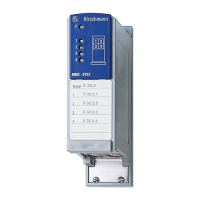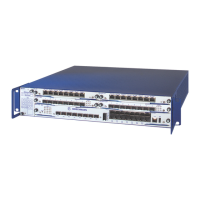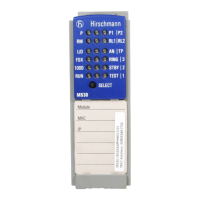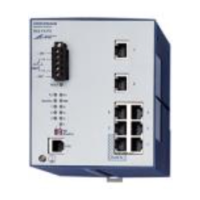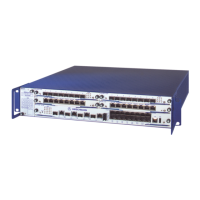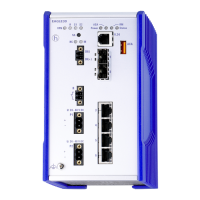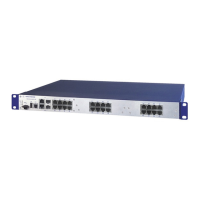Network Load Control
UM Basic Configuration L3P
Release
7.1
12/2011
8.4
QoS/Priority
177
Maximum bandwidth
By entering a maximum bandwidth you can limit the bandwidth for each
traffic class to a maximum value, regardless of whether you selected
“Weighted Fair Queuing” or “Strict Priority”.
Weighted Fair Queuing (see on page 176 “Description of Weighted
Fair Queuing”) requires that the maximum bandwidth is at least as big
as the minimum bandwidth.
With “Strict Priority”, individual high-priority packets with low latency
are processed (see on page 176 “Description of Strict Priority”). If the
maximum bandwidth is configured to a value less than 100%, even
data packets with lower traffic classes can be sent in periods of high-
priority overloading.
The weighting values range from 0% to 100% of the available
bandwidth, in steps of 5%.
Description of Traffic Shaping
With Traffic Shaping you have the option of restricting the maximum
bandwidth of an interface.
The values for the bandwidth restriction range from 0% to 95%, in steps
of 5%.
The value "0" is equivalent to a "no bandwidth restriction" setting.
The value "95" means that 95% of the bandwidth is available.
If the bandwidth set is temporarily exceeded, the device saves the data
and sends it when the bandwidth load has decreased again. Traffic
Shaping thus smooths out any overload situations.
If Traffic Shaping is active on an interface, the device ignores the
bandwidths reserved for Weighted Fair Queuing.
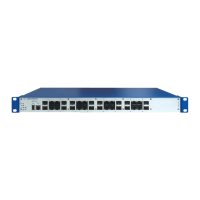
